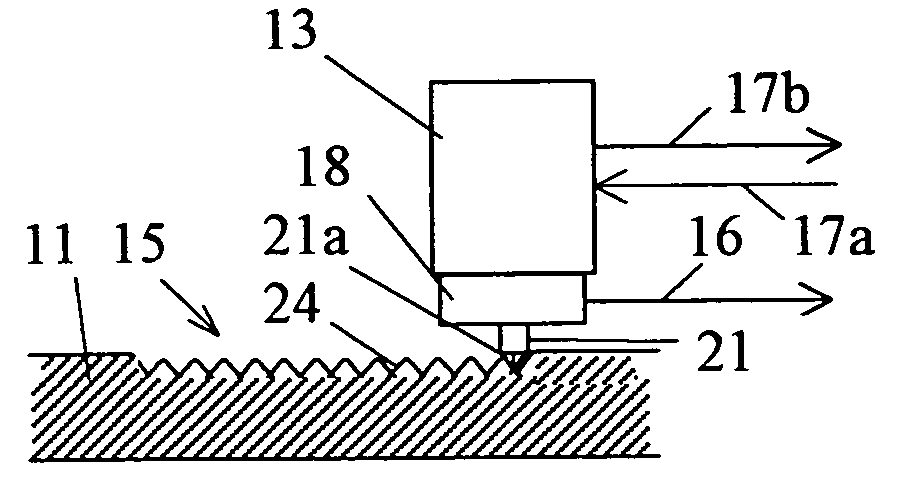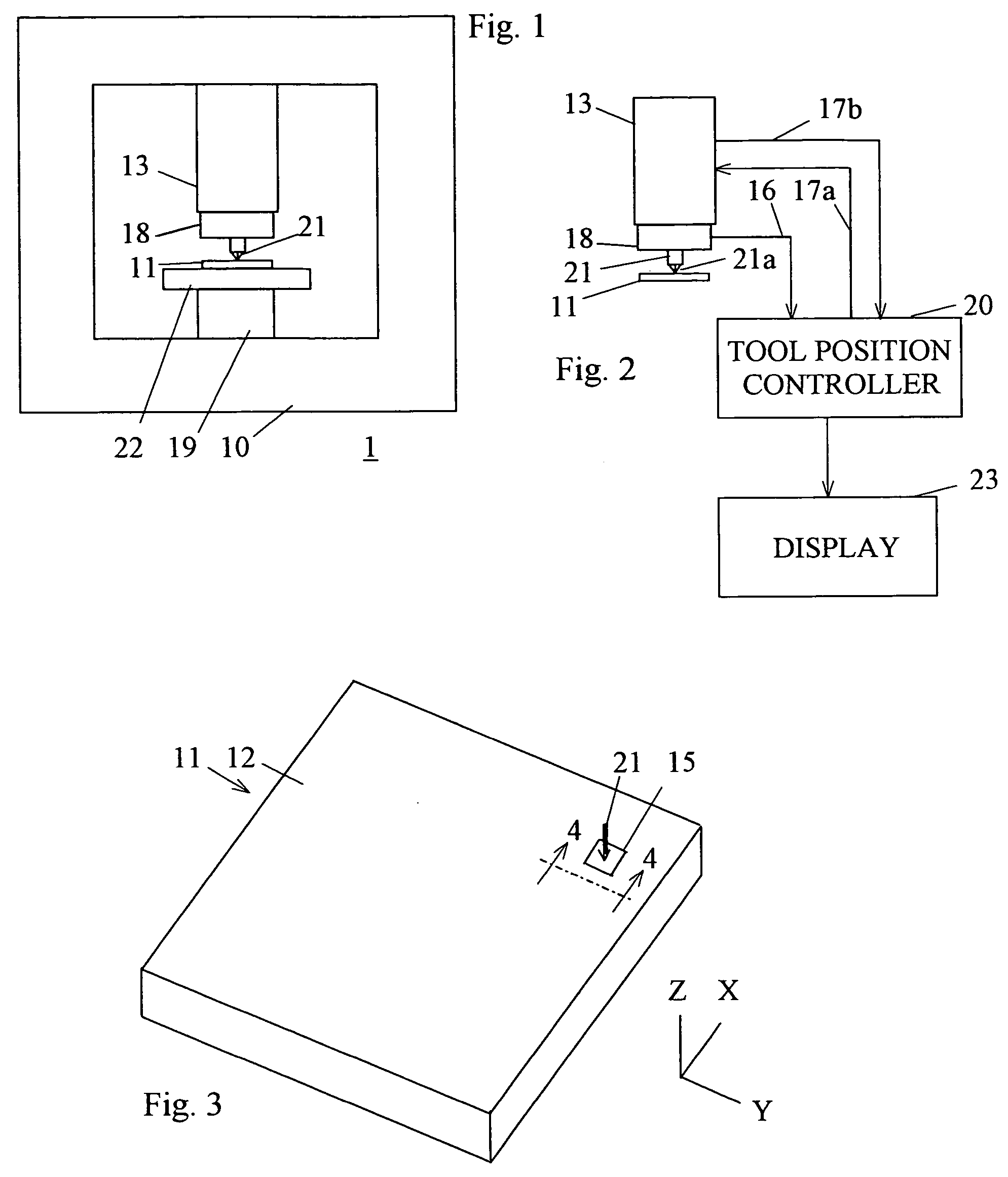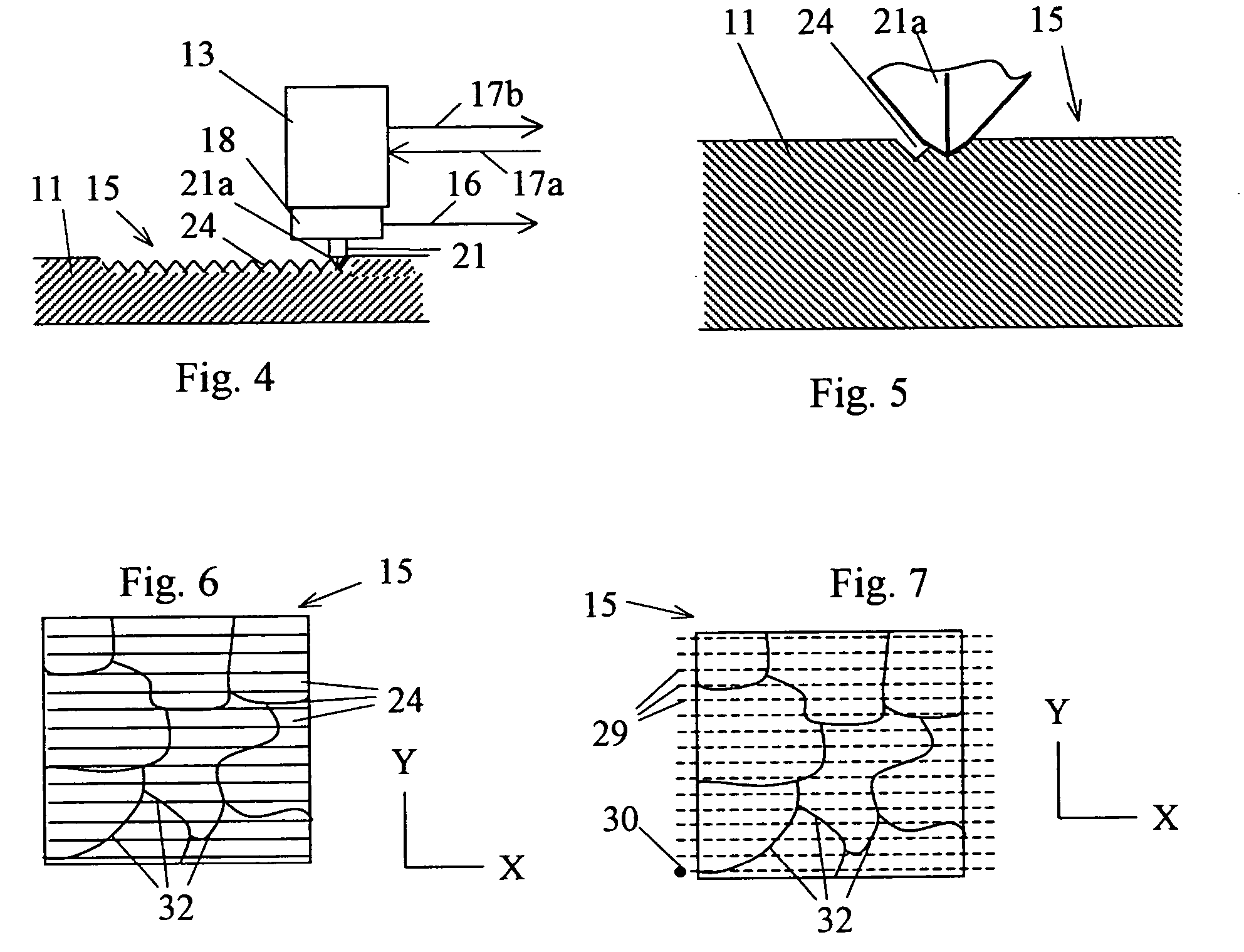Method for observation of microstructural surface features in heterogeneous materials
a microstructure and surface feature technology, applied in the direction of mechanical measurement arrangement, mechanical roughness/irregularity measurement, instruments, etc., can solve the problems of inability to see with a conventional optical microscope, small surface topography, and inability to be very detailed, so as to improve the speed
- Summary
- Abstract
- Description
- Claims
- Application Information
AI Technical Summary
Benefits of technology
Problems solved by technology
Method used
Image
Examples
Embodiment Construction
[0039] The method of the invention forms an image of variations in submicrostructural properties reflected as hardness or wear resistance at the nanometer level for a material sample 11 such as shown in FIG. 3. Sample 11 may comprises any of a wide variety of metals, ceramics, biological materials, plastics, coatings, or amorphous materials with heterogeneous small features. Of course, parameters used in implementing the method of the invention depend on the type of material comprising sample 11.
[0040] Sample 11 has a test surface 12 in which a sample area 15 is selected. Sample area 15 may be approximately square with a side whose length is in the approximate range of 50 nm to 80 microns (μm), with 10 μm a typical length.
[0041] Tool 21 is shown positioned within sample area 15. Precision positioner 13 carries tool 21 as previously described. Tool 21 will normally be approximately positioned within area 15 by movement of stage 22. Stage 22 may be shifted either under manual contro...
PUM
 Login to View More
Login to View More Abstract
Description
Claims
Application Information
 Login to View More
Login to View More - R&D
- Intellectual Property
- Life Sciences
- Materials
- Tech Scout
- Unparalleled Data Quality
- Higher Quality Content
- 60% Fewer Hallucinations
Browse by: Latest US Patents, China's latest patents, Technical Efficacy Thesaurus, Application Domain, Technology Topic, Popular Technical Reports.
© 2025 PatSnap. All rights reserved.Legal|Privacy policy|Modern Slavery Act Transparency Statement|Sitemap|About US| Contact US: help@patsnap.com



